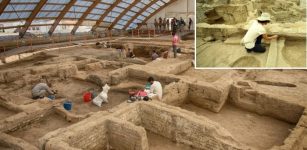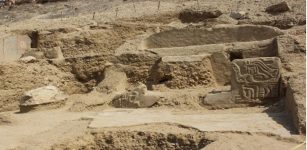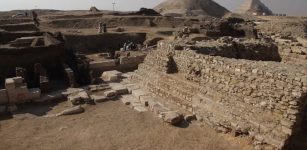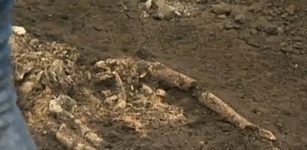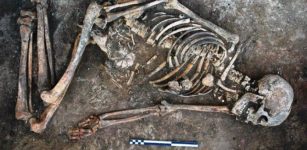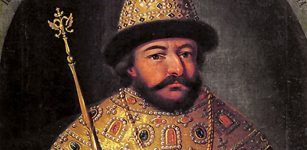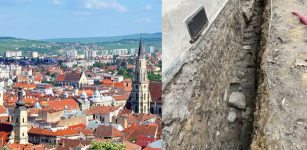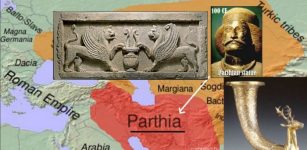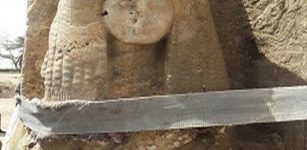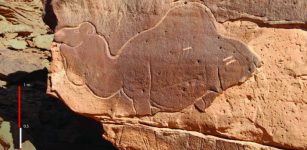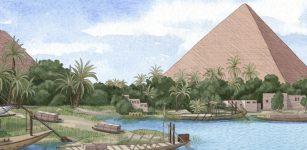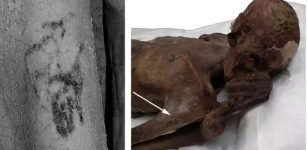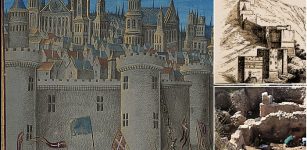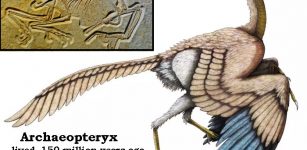Unusual Secret Found In Tycho Brahe’s Alchemy Laboratory
Jan Bartek - AncientPages.com - In the Middle Ages, alchemists, including the Danish astronomer Tycho Brahe, were known for their secrecy regarding their work. Brahe's alchemical laboratory was located beneath his residence and observatory, Uraniborg, on the island of Ven, which is now part of Sweden. Due to this secrecy, our knowledge of his alchemical practices is limited.
Only a small number of Brahe's alchemical recipes have been preserved, and very little physical evidence of his laboratory remains. Following Brahe's death in 1601, Uraniborg was demolished, and its building materials were repurposed.
An archaeological excavation conducted between 1988 and 1990 in Uraniborg's former garden uncovered pottery and glass fragments. These fragments are believed to have originated from the alchemical laboratory in the basement. Recently, five of these fragments—four glass and one ceramic—have been subjected to chemical analysis. The purpose of this analysis is to identify the elements that the original containers came into contact with during their use in the laboratory.
This scientific investigation aims to provide insights into the materials and processes used in Brahe's alchemical work, potentially shedding light on the practices of this secretive field during the Middle Ages.
The chemical analyses were conducted by Professor Emeritus and expert in archaeometry, Kaare Lund Rasmussen from the Department of Physics, Chemistry, and Pharmacy, University of Southern Denmark. Senior researcher and museum curator Poul Grinder-Hansen from the National Museum of Denmark oversaw the insertion of the analyses into historical context.
Enriched levels of trace elements were found on four of them, while one glass shard showed no specific enrichments.
"Most intriguing are the elements found in higher concentrations than expected—indicating enrichment and providing insight into the substances used in Tycho Brahe's alchemical laboratory," said Lund Rasmussen.
Analysis of the shards revealed enriched elements like nickel, copper, zinc, tin, antimony, tungsten, gold, mercury, and lead on both surfaces. Most of these elements are typical of an alchemist's laboratory from this period. Gold and mercury are particularly significant, as they were commonly used in medical treatments for the upper class, believed to cure various ailments.
"But tungsten is very mysterious. Tungsten had not even been described at that time, so what should we infer from its presence on a shard from Tycho Brahe's alchemy workshop?" said Lund Rasmussen.
Tungsten's history in scientific discovery spans several centuries. Carl Wilhelm Scheele, a Swedish chemist, first described and produced pure tungsten more than 180 years after its initial observation. The element naturally occurs in certain minerals, which may explain its presence in Tycho Brahe's laboratory.
It's possible that Brahe unknowingly processed a tungsten-containing mineral, resulting in the element's separation without his awareness. However, Professor Lund Rasmussen notes an alternative theory, though currently unsupported by evidence.
Interestingly, the German mineralogist Georgius Agricola documented a peculiar substance in tin ore from Saxony in the early 1500s. This substance, which caused difficulties in tin smelting, was termed "Wolfram" by Agricola. The name, meaning "Wolf's froth" in German, was later translated to "tungsten" in English.
"Maybe Tycho Brahe had heard about this and thus knew of tungsten's existence. But this is not something we know or can say based on the analyses I have done. It is merely a possible theoretical explanation for why we find tungsten in the samples," said Lund Rasmussen.
Tycho Brahe belonged to the branch of alchemists who, inspired by German physician Paracelsus, tried to develop medicines for various diseases of the time: plague, syphilis, leprosy, fever, stomach aches, and others. He distanced himself from the branch that attempted to create gold from less valuable minerals and metals.
Like other medical alchemists of the time, he kept his recipes secret, sharing them only with a few selected individuals, such as his patron, Emperor Rudolph II, who allegedly received Tycho Brahe's prescriptions for plague medicine.
Tycho Brahe's plague medicine was complex, containing theriac (a multi-ingredient remedy including snake flesh and opium), copper or iron sulfates, oils, and herbs. After filtration and distillation, the first of three recipes was created. It could be enhanced with tinctures of coral, sapphires, hyacinths, or potable gold.
The building Uraniborg on the island of Ven (now Sweden) was a combined observatory, laboratory and residence for Danish renaissance astronomer Tycho Brahe. Credit: wikipedia
"It may seem strange that Tycho Brahe was involved in both astronomy and alchemy, but when one understands his worldview, it makes sense. He believed that there were obvious connections between the heavenly bodies, earthly substances, and the body's organs," explained Grinder-Hansen.
See also: More Archaeology News
"Thus, the sun, gold, and the heart were connected, and the same applied to the moon, silver, and the brain; Jupiter, tin, and the liver; Venus, copper, and the kidneys; Saturn, lead, and the spleen; Mars, iron, and the gallbladder; and Mercury, mercury, and the lungs. Minerals and gemstones could also be linked to this system, so emeralds, for example, belonged to Mercury."
Lund Rasmussen has previously analyzed hair and bones from Tycho Brahe and found, among other elements, gold. This could indicate that Tycho Brahe himself had taken medicine that contained potable gold.
The study was published in the journal Heritage Science
Written by Jan Bartek - AncientPages.com Staff Writer



